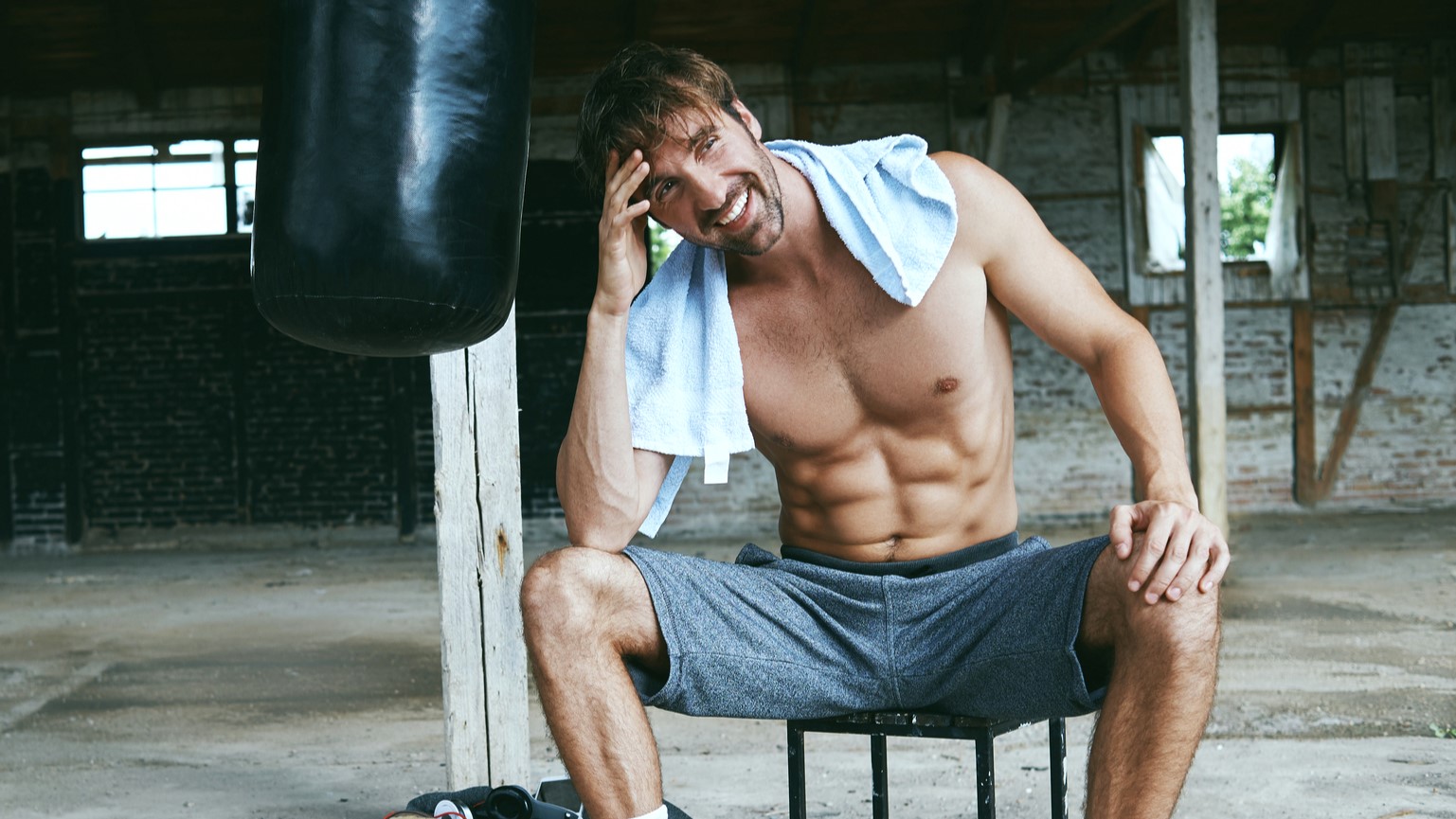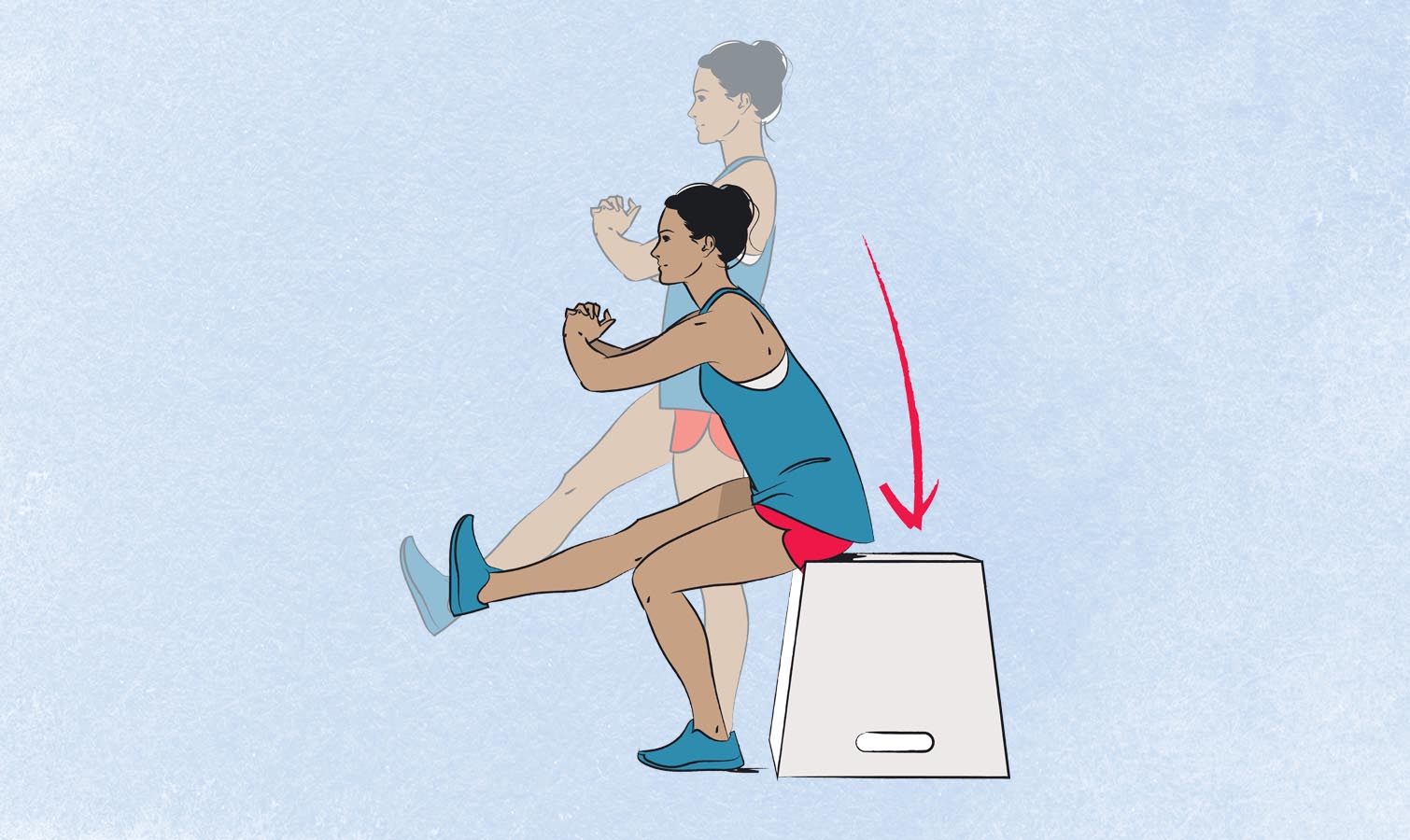Forget lunges — I did single-leg seated squats every day for a week and here's what happened to my body

Some exercises will quickly let you know you’re not as strong as you thought you were; others will reveal you lack flexibility somewhere; and a few just look like more trouble than they’re worth (I’m looking at you, one-armed pull-up). But it’s the rare exercise indeed that calls into question your long-held perceptions of your own body. Such was the case when I did the single-leg seated squat for a week.
What is it?
As you’ve doubtless guessed from the name, the single-leg seated squat is a squat performed on one leg from a seated position. If you’re going to try it, I recommend you first perfect the standard two-legged squat. This is a demanding and fairly advanced move that primarily works your quads, hamstrings and glutes. It also develops stability and coordination. It’s great for building strength around your knee, which will help prevent injury, but it can be a tough move on the knee, too, if your form is poor, so be careful. If you feel knee pain doing this exercise, do not continue, as you could damage the joint.
How to do a single-leg squat?
Here's how to master the move with perfect form:

- Begin sitting on a chair, bench or plyo box. The lower the seat, the harder the move will be, so I suggest you begin with a chair/bench about knee height or slightly above. Sit straight, chest up and head high.
- Extend one leg straight in front you. It doesn’t have to be high, about four inches off the ground should do it. Keep your other leg planted on the floor, with your heel slightly behind your knee. The move will be much harder if your standing leg forms a right angle at this point.
- Driving from the heel of your planted leg, stand up. Do not let your knee stray in or out as you rise; it should remain directly over your foot. You may need to reach out with your arms to help propel you into the standing position.
- With one leg still raised, smoothly lower yourself back to the seated position. Start off with five to 10 reps and then change legs.
Here’s what I learned when I did single-leg seated squats for a week
To begin with, I learned that I’m unbalanced. Wildly, out-of-control unstable. My left leg performed its duty with solemnity and composure, rising steadily into a standing position and gracefully returning my body to the bench. My right leg, however (I desperately want to write ‘on the other hand’), appeared to be drunk. For the first rep of the first set, on every day of the challenge, it failed to rise to the occasion, and I had to begin again. Once on the move, it wobbled left and right, the knee shooting out like it wanted nothing to do with the shameful performance. And when returning to the start position, I invariably hit the bench with a thud, like a baby flumping onto the floor when learning to walk. I got better as the week progressed, but it’s clear my right side is vastly weaker than my left. This stunned me.
I’m right-footed, for a start, and played a lot of soccer when I was younger. I also played a fair amount of basketball as a teenager. Both sports require strong legs, though I must admit that on the basketball court, I led off with my left leg for most of my layups (I was enthusiastic, but not versatile).
Also, I’ve been running regularly for about 15 years, and have always thought my two sides were evenly matched. Could I have been running better, and with fewer injuries, if I’d noticed this imbalance earlier and done something about it? Frankly, I’m amazed I don’t run in tiny circles.
Since the imbalance became so clear, I’ve also been wondering if it’s been the cause of my not-infrequently sprained ankle. It is never the left ankle. Ever.
Get instant access to breaking news, the hottest reviews, great deals and helpful tips.
I am still a work in progress
This was the most eye-opening challenge I’ve undertaken for Tom’s Guide, and the most important. I learned something important about my body and I know how to address the issue. Indeed, I began during the challenge. By day four I had stopped doing the move on my left leg, which continued to perform with admirable and quiet efficiency. I figured my right side has to catch up, so I did the exercise on the right leg only. I occasionally heard some mighty cracking in my knee, like the sound of a tree as it begins to fall, but no pain as I focused on keeping the joint in line with my toes. And it became easier. I was not smooth, not elegant, and I continued to land more heavily than I’d have liked, but I noticed improvement. I was feeling the move mostly in my right-side glutes, so I wonder if this is where the weakness is centred.
My first set was invariably the worst and the last was always the most successful, as if my muscles and tendons were learning, albeit slowly, and had to do so anew each day. While all this was happening, my left side, ever considerate, made no comments. It is a class act.
Persistence is never futile
On day one, I completed three ragged sets of five on my right leg (my left was effortlessly up to sets of 10 on day two). By the end of the week, I had built up to three sets of 10 on my weak side. I was delighted with the improvement, but I knew I was far from done. A lot of work lies ahead, so I’ve continued to do the exercise every day, on my right leg only. Three days after the challenge I completed 20 reps without stopping. And every now and then, when I managed a soft landing, the cushioning on the bench seemed to sigh with gratitude. Or relief.
I did single-leg seated squats for a week — here's my verdict
Do I recommend the single-leg seated squat? Of course I do, without hesitation or qualification. Most of us are stronger on one side than the other. This move will show you that and help you return to a state of equilibrium. It’s just a matter of finding the right balance.
More from Tom's Guide
- Forget the gym — 7 bodyweight exercises that strengthen and define your entire body
- I did 50 walking lunges every day for a week — here’s what happened to my legs
- Forget sit-ups — these are the best exercises for sculpting a six-pack
John is a writer and editor based in London. He was worked for magazines such as Runner’s World, Men’s Health, Women’s Health and Cosmopolitan. A keen runner, what he lacks in ability he makes up for with enthusiasm and excuses.

